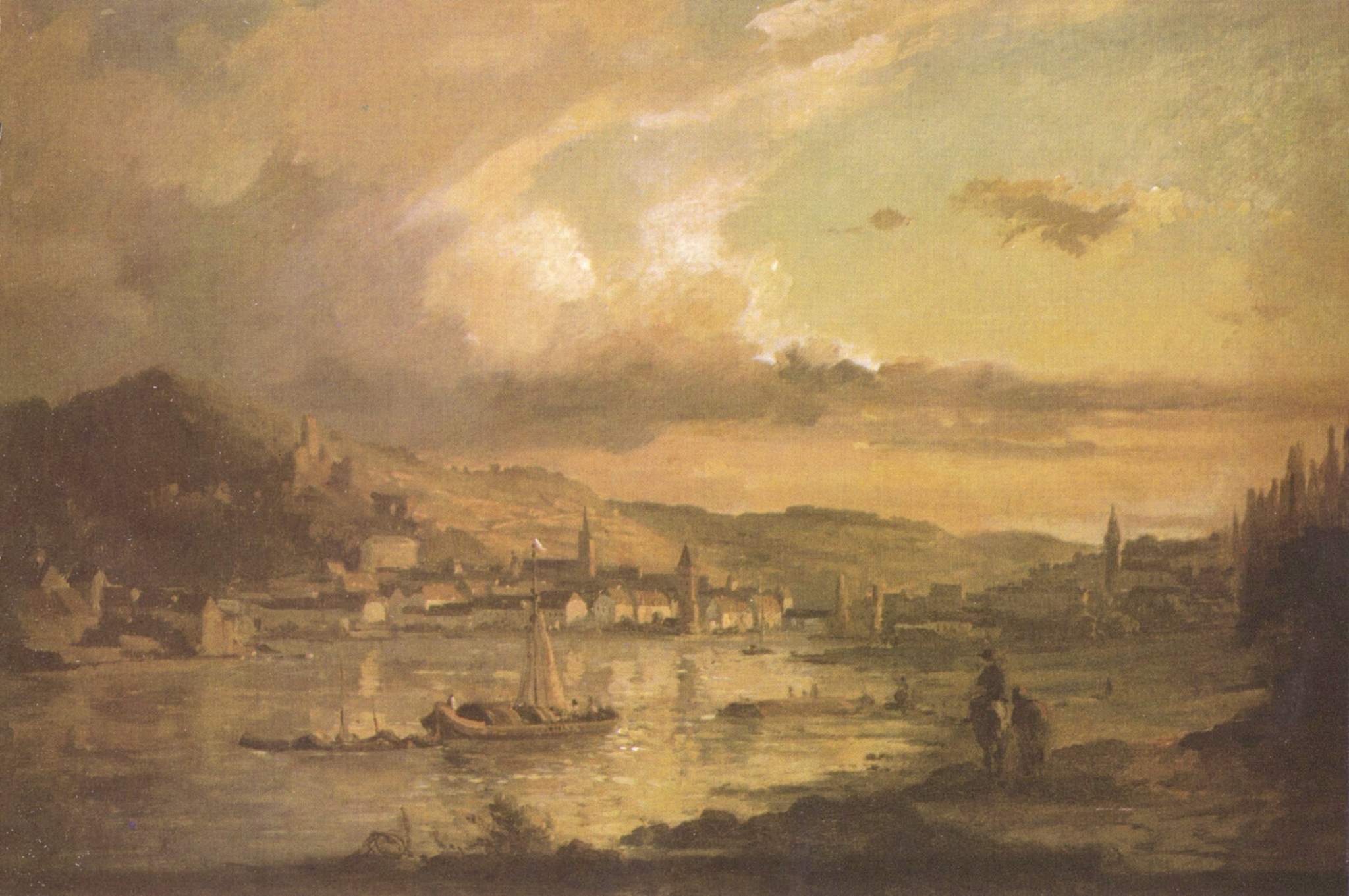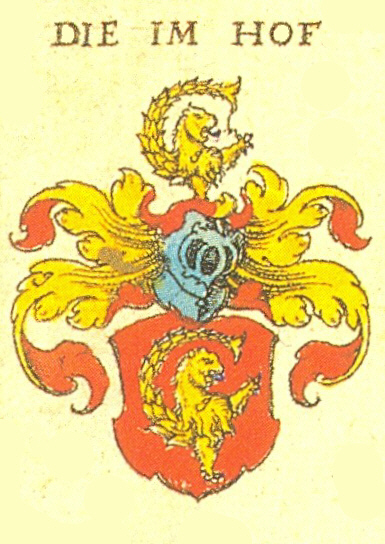|
Helmstadt
Helmstadt is a municipality in the Lower Franconian district of Würzburg in Bavaria in Germany. Geography Municipal structure Helmstadt consists of two districts: * Helmstadt * Holzkirchhausen Neighboring municipalities * Holzkirchen * Uettingen * Waldbüttelbrunn * Irtenberger Wald * Altertheim * Neubrunn * Wertheim Name Etymology The name Helmstadt consists of the first name Adalhalm and the Old High German word ''stat''. It thus means dwelling of Adalhalm. Historical spellings * 770 Adalhalmestat * 816 Halabingestat * 1246 Helbingestat * 1305 Heblingestat * 1335 Helmstat * 1559 Helmstadt * 1800 Markthelmstadt * 1831 Helmstadt History Early history A first settling of the region took place at the time of the Linear Pottery culture between 6000 and 4000 BC, as evidenced by archeological findings at the Altersberg, Ameisenberg and in the Hochstatt. For the time after that, no findings are known. Another settlement at the Roth was established at the ... [...More Info...] [...Related Items...] OR: [Wikipedia] [Google] [Baidu] |
Würzburg (district)
Würzburg is a ''Landkreis'' (district) in the northwestern part of Bavaria, Germany. Neighboring districts are (from the north, clockwise) Main-Spessart, Schweinfurt, Kitzingen, Neustadt (Aisch)-Bad Windsheim, and the district Main-Tauber in Baden-Württemberg. The city Würzburg is not part of the district, although it is completely enclosed by it. History In 1852, districts were created in the region, including the two precursor districts of Würzburg and Ochsenfurt. In 1972 the previous district Würzburg was merged with the former district Ochsenfurt, and several municipalities from the districts Marktheidenfeld, Karlstadt, Kitzingen and Gerolzhofen were added to form the district with today's borders. Economy In 2017 (latest data available) the GDP per inhabitant was €28,681. This places the district 86th out of 96 districts (rural and urban) in Bavaria (overall average: €46,698). Partnerships The district has sister city-like partnerships with these regions: * - Ma ... [...More Info...] [...Related Items...] OR: [Wikipedia] [Google] [Baidu] |
Uettingen
Uettingen is a municipality in the district of Würzburg in Bavaria, Germany Germany,, officially the Federal Republic of Germany, is a country in Central Europe. It is the second most populous country in Europe after Russia, and the most populous member state of the European Union. Germany is situated betwe .... References Würzburg (district) {{Würzburgdistrict-geo-stub ... [...More Info...] [...Related Items...] OR: [Wikipedia] [Google] [Baidu] |
Wertheim Am Main
Wertheim (East Franconian: ''Wärde'') is a town in southwestern Germany, in the state of Baden-Württemberg with a population of around 23,400. It is located on the confluence of the rivers Tauber and Main. Wertheim is best known for its landmark castle and medieval town centre. Geography Wertheim is the most northerly town in the state of Baden-Württemberg. It is situated at the confluence of the rivers Tauber and Main, on the Main's left bank. It borders on the Odenwald hills and the Spessart range to the north across the river Main. Wertheim is located in the Main-Tauber district. Neighboring communities The following towns and communities border on Wertheim, listed clockwise starting in the east: Holzkirchen, Helmstadt and Neubrunn (all district Würzburg, Bavaria), Werbach and Külsheim (both Main-Tauber district), Neunkirchen ( district Miltenberg, Bavaria), Freudenberg (Main-Tauber district), Stadtprozelten and Faulbach (both Miltenberg district) and Hasloch, ... [...More Info...] [...Related Items...] OR: [Wikipedia] [Google] [Baidu] |
Holzkirchen, Lower Franconia
Holzkirchen is a municipality in the district of Würzburg in Bavaria, Germany Germany,, officially the Federal Republic of Germany, is a country in Central Europe. It is the second most populous country in Europe after Russia, and the most populous member state of the European Union. Germany is situated betwe .... References Würzburg (district) {{Würzburgdistrict-geo-stub ... [...More Info...] [...Related Items...] OR: [Wikipedia] [Google] [Baidu] |
Nuremberg
Nuremberg ( ; german: link=no, Nürnberg ; in the local East Franconian dialect: ''Nämberch'' ) is the second-largest city of the German state of Bavaria after its capital Munich, and its 518,370 (2019) inhabitants make it the 14th-largest city in Germany. On the Pegnitz River (from its confluence with the Rednitz in Fürth onwards: Regnitz, a tributary of the River Main) and the Rhine–Main–Danube Canal, it lies in the Bavarian administrative region of Middle Franconia, and is the largest city and the unofficial capital of Franconia. Nuremberg forms with the neighbouring cities of Fürth, Erlangen and Schwabach a continuous conurbation with a total population of 800,376 (2019), which is the heart of the urban area region with around 1.4 million inhabitants, while the larger Nuremberg Metropolitan Region has approximately 3.6 million inhabitants. The city lies about north of Munich. It is the largest city in the East Franconian dialect area (colloquially: "F ... [...More Info...] [...Related Items...] OR: [Wikipedia] [Google] [Baidu] |
Teutonic Order
The Order of Brothers of the German House of Saint Mary in Jerusalem, commonly known as the Teutonic Order, is a Catholic religious institution founded as a military society in Acre, Kingdom of Jerusalem. It was formed to aid Christians on their pilgrimages to the Holy Land and to establish hospitals. Its members have commonly been known as the Teutonic Knights, having a small voluntary and mercenary military membership, serving as a crusading military order for the protection of Christians in the Holy Land and the Baltics during the Middle Ages. Purely religious since 1810, the Teutonic Order still confers limited honorary knighthoods. The Bailiwick of Utrecht of the Teutonic Order, a Protestant chivalric order, is descended from the same medieval military order and also continues to award knighthoods and perform charitable work. Name The name of the Order of Brothers of the German House of Saint Mary in Jerusalem is in german: Orden der Brüder vom Deutschen Haus der He ... [...More Info...] [...Related Items...] OR: [Wikipedia] [Google] [Baidu] |
Bishopric Of Würzburg
In church governance, a diocese or bishopric is the ecclesiastical district under the jurisdiction of a bishop. History In the later organization of the Roman Empire, the increasingly subdivided provinces were administratively associated in a larger unit, the diocese (Latin ''dioecesis'', from the Greek term διοίκησις, meaning "administration"). Christianity was given legal status in 313 with the Edict of Milan. Churches began to organize themselves into dioceses based on the civil dioceses, not on the larger regional imperial districts. These dioceses were often smaller than the provinces. Christianity was declared the Empire's official religion by Theodosius I in 380. Constantine I in 318 gave litigants the right to have court cases transferred from the civil courts to the bishops. This situation must have hardly survived Julian, 361–363. Episcopal courts are not heard of again in the East until 398 and in the West in 408. The quality of these courts was l ... [...More Info...] [...Related Items...] OR: [Wikipedia] [Google] [Baidu] |
Julius Echter
Julius Echter von Mespelbrunn (18 March 1545 – 9 September 1617) was Prince-Bishop of Würzburg from 1573. He was born in Mespelbrunn Castle, Spessart (Lower Franconia) and died in Würzburg. Life He was educated in Mainz, Leuven, Douai, Paris, Angers, Pavia, and Rome. In Rome he became a licentiate of canon and civil law. In 1567 he entered on his duties as canon of Würzburg, an office to which he had been appointed in 1554; in 1570 he became the dean of the cathedral chapter, and in 1573, at the age of twenty-eight, even before his ordination to the priesthood, was appointed to the office of the Prince-Bishop of Würzburg. During the first ten years of Echter's government, the attempt to unite the Abbey of Fulda and the Bishopric of Würzburg, after the deposition of the Prince-Abbot Balthasar von Dernbach, caused much confusion. From the beginning, he carried out a thorough ecclesiastical restoration. To this end, he promoted the Jesuits and their ministry. Ec ... [...More Info...] [...Related Items...] OR: [Wikipedia] [Google] [Baidu] |
Vogt
During the Middle Ages, an (sometimes given as modern English: advocate; German: ; French: ) was an office-holder who was legally delegated to perform some of the secular responsibilities of a major feudal lord, or for an institution such as an abbey. Many such positions developed, especially in the Holy Roman Empire. Typically, these evolved to include responsibility for aspects of the daily management of agricultural lands, villages and cities. In some regions, advocates were governors of large provinces, sometimes distinguished by terms such as (in German). While the term was eventually used to refer to many types of governorship and advocacy, one of the earliest and most important types of was the church advocate (). These were originally lay lords, who not only helped defend religious institutions in the secular world, but were also responsible for exercising lordly responsibilities within the church's lands, such as the handling of legal cases which might require the u ... [...More Info...] [...Related Items...] OR: [Wikipedia] [Google] [Baidu] |
Saint Aegidius
Saint Giles (, la, Aegidius, french: Gilles), also known as Giles the Hermit, was a hermit or monk active in the lower Rhône most likely in the 6th century. Revered as a saint, his cult became widely diffused but his hagiography is mostly legendary. A town that bears his name grew up around the monastery he purportedly founded, which became a pilgrimage centre and a stop on the Way of Saint James. He is traditionally one of the Fourteen Holy Helpers. Historicity The legend of Giles connects him to Caesarius of Arles, who died in 543. In 514, Caesarius sent a messenger, Messianus, to Pope Symmachus in the company of an abbot named Aegidius. It is possible that this abbot is the historical figure at the basis of the legend of Saint Giles.J. Pycke, "(2) Gilles", in ''Dictionnaire d'histoire et de géographie ecclésiastiques'', Vol. 20 (1984): cols. 1352–1355. There are two forged Papal bulls purporting to have been issued by Pope John VIII in 878. Sometimes taken as authent ... [...More Info...] [...Related Items...] OR: [Wikipedia] [Google] [Baidu] |
Imhoff Family
The Imhoff, Imhof or Im Hof family is a noble patrician family that belonged to the wealthy trading dynasties and ruling oligarchy in the Free Imperial City of Nuremberg during its ''Golden Age'' in the Renaissance. The ''Imhoff Trading Company'' was one of the most important European traders between the 15th and 17th centuries. It maintained branches and trade connections throughout Europe and financed European courts with loans. History The family was originally from Lauingen where they belonged to the patrician families. ''Hans im Hof'' (c. 1260-1341) is the first mentioned member and ''Sigmund Imhof'' was mayor of Lauingen in 1277. The city belonged to the hereditary Duchy of the Hohenstaufen emperors. After the death of their last offspring, Conradin, in 1268, Lauingen fell to Louis II, Duke of Bavaria, following which a number of young patricians left the city, including Konrad and Hans II Imhoff, to settle in the free imperial city of Nuremberg. Hans II married Lucia Gross ... [...More Info...] [...Related Items...] OR: [Wikipedia] [Google] [Baidu] |
Fulda Monastery
The Abbey of Fulda (German ''Kloster Fulda'', Latin ''Abbatia Fuldensis''), from 1221 the Princely Abbey of Fulda (''Fürstabtei Fulda'') and from 1752 the Prince-Bishopric of Fulda (''Fürstbistum Fulda''), was a Order of Saint Benedict, Benedictine abbey and Hochstift, ecclesiastical principality centered on Fulda, in the present-day German state of Hesse. The monastery was founded in 744 by Saint Sturm, a disciple of Saint Boniface. After Boniface was buried at Fulda, it became a prominent center of learning and culture in Germany, and a site of religious significance and pilgrimage through the 8th and 9th centuries. The ''Annals of Fulda'', one of the most important sources for the history of the Carolingian Empire in the 9th century, were written there. In 1221 the abbey was granted an imperial estate to rule and the abbots were thereafter princes of the Holy Roman Empire. In 1356, Emperor Charles IV bestowed the title "Archchancellor of the Empress" (''Erzkanzler der Kaiserin' ... [...More Info...] [...Related Items...] OR: [Wikipedia] [Google] [Baidu] |






